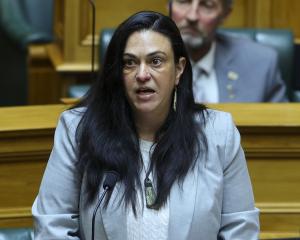The saga of Blueskin Energy's proposed wind farm shows just how difficult it can be to get renewable energy projects up and running.
On paper, if there was going to be anywhere a small-scale renewable energy project would work, it would surely be Waitati, the small seaside community just north of Dunedin, with a high population of liberal, artistic and environmentally conscious folk, who value self-sufficiency and sustainability.
Perfect credentials for helping such a project fly - one would think.
So what has gone so wrong?
Why such an ill wind?
How has a community of seemingly like-minded individuals become so bitterly divided?
The proposed wind farm is the brainchild of the Blueskin Resilient Communities Trust through its company, Blueskin Energy.
The charitable trust, formed in 2008, says it "supports local sustainability and climate change initiatives in a planned and structured way''.
The wind farm - three 90m-tall turbines proposed for Porteous Hill overlooking Blueskin Bay, at a cost of $5 million to $6 million with estimated annual profits of $100,000 to be returned to the community - is its signature project.
The project seemed to gather momentum and there was something of a buzz about it.
The trust claimed it had widespread community support.
But as the project headed to the council resource consent stage, the wheels started to fall off.
Former proponents turned against the project, the criticism mounted and it became apparent the situation was anything but clear cut.
In April, Dunedin City Council planner Darryl Sycamore recommended consent for the project be granted - subject to conditions.
At the beginning of this month's resource consent hearing he reserved his findings until submissions were heard.
A total of 146 submissions were received by the council: 73 in support of and 68 opposed to the project (five were neutral).
Various landscape experts presented contradictory evidence at the hearing, as did ecologists about the potential impact on native wildlife.
Mr Sycamore then did a surprise U-turn and recommended consent be declined.
However, even that was tempered with the following to Commissioner Colin Weatherall, tasked with making the final decision: "If you find the groundwater assessment concludes the project will not affect the reliability of springs and you find the visual and noise effects on Pryde Rd neighbours are acceptable then it is my recommendation that consent be granted.''
It has become a minefield. Of course, in such a project there are going to be concerns and differences of opinion.
People are seldom going to agree on the appearance of turbines, for example.
But there seems to be such a range of opinions on some of the basics: whether the economics stack up and the promised local investment returns are realised, the visual dominance, the noise, the effects on nearby groundwater, farming operations, birdlife, and on health.
One of the areas which has most polarised the trust and some submitters is about the amount of consultation undertaken.
Even in a "green'' community it seems the reality of the renewable energy ideology is another thing entirely.
Yet, surely, such small-scale projects are sensible.
The Government has ratified the Paris agreement on climate change, yet admitted its target of 90% renewable electricity generation by 2025 is ambitious.
If there is little appetite for large-scale projects (as the response to the likes of Project Aqua and Project Hayes has shown), and fears remain concerning supply due to the Tiwai Point aluminium smelter (which is keeping Huntly's remaining coal-fired power generators open longer), surely every little bit counts?
Projects with a smaller environmental footprint which generate power locally to be distributed locally (therefore avoiding the costs and losses involved with transmission) should have a part to play.
Perhaps the issues are not yet ironed out, but it seems proponents are at least trying to drive us in the right direction.
Trust manager Scott Willis has vowed to continue the fight.
No-one can envy Cr Weatherall his decision, which is due by the end of June.












